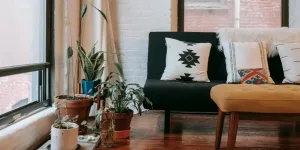Table of Contents
● Introduction
● Market overview
● Different types of poufs and their features
● KEY considerations when selecting poufs
● Conclusion
Introduction
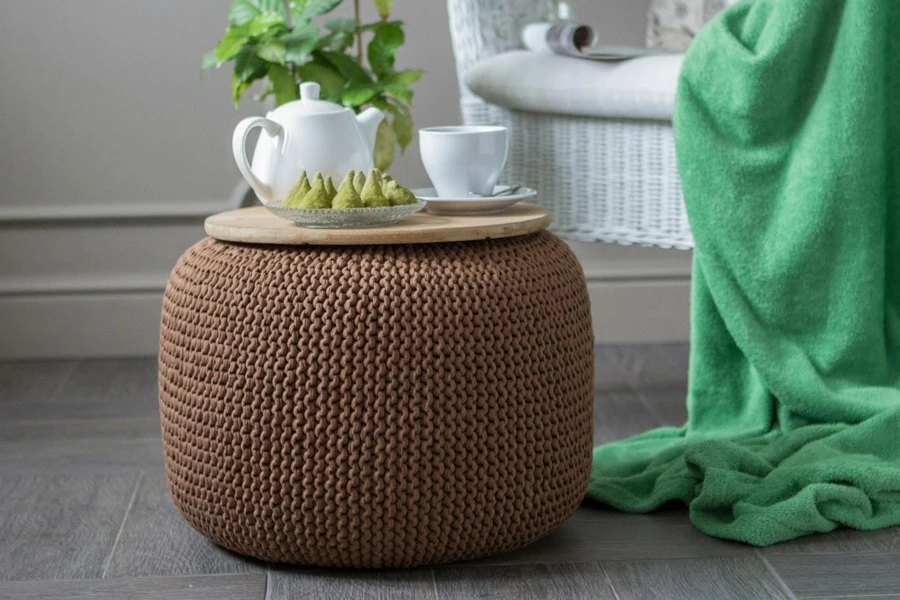
The evolution of poufs has made them essential in home decor by blending style with versatility. They serve various functions like seats, footrests, and tables within diverse interior designs, promoting both visual appeal and practical use. They have become a top choice across decor styles due to their ability to adapt to different spaces and purposes, solidifying their significance in today’s market. The rising need for home decor is fueling interest in poufs as important elements for crafting unified and lively living spaces.
Market overview

Market scale and growth
The worldwide poufs industry is seeing expansion. It was valued at US $3.159 billion in 2023 and is estimated to hit US $7.03 billion by 2032 with a growth rate of 9.3% per year. This growth is fueled by rising demand for furniture in households where poufs are not just decorative but also functional pieces in living areas. With cities growing and living spaces getting smaller in size due to urbanization trends, there is a predicted increase in demand for functional furniture such as poufs that help save space effectively.
Regional insights
In North America, poufs are quite popular in homes and offices. This is because people there really like having practical furniture pieces in their living spaces. Also, there’s a growing interest in home decor products, which is driving people to choose poufs made from eco-friendly materials. A variety of poufs in different shapes, sizes, and materials, like fabric and leather, are driving market growth by meeting consumer preferences and interior design requirements.
Different types of poufs and their features
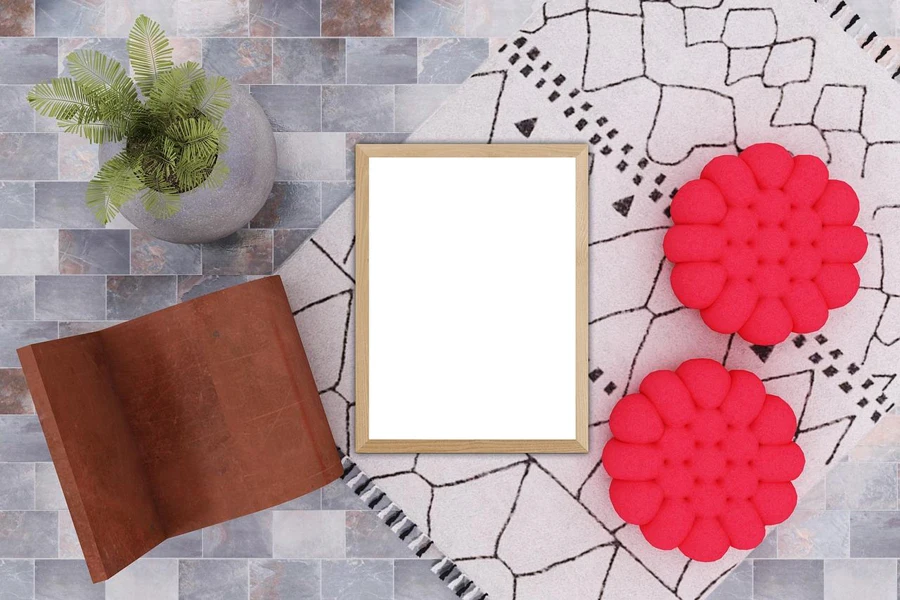
Modern poufs
Contemporary ottomans are commonly made from foam or sturdy polystyrene beads to offer comfort and longevity. The outer covering is usually upholstered in materials such as polyester or cotton blends for their easy upkeep and ability to resist wear and tear. These ottomans frequently include a reinforced base to guarantee stability when utilized as a table or seating option. They are offered in forms like squares and cylinders, complementing minimalist home designs that prioritize both style and practicality. Their creations often feature neutral tones or delicate designs that seamlessly complement interiors; some options even come with discreet zippers for effortless maintenance and interchangeable covers for added versatility.
Moroccan poufs
Moroccan poufs stand out for their hand-stitched leather coverings crafted from high-quality goat or camel leather known for its durability and beautiful patina that forms over time. The filling inside typically includes recycled cotton or wool blended with fibers to create a cozy seating experience. The detailed embroidery and traditional patterns not only add flair but also strengthen seams for lasting durability. These ottomans usually come in round shapes, with sizes varying from 20 to 24 inches in diameter and heights ranging from 12 to 14 inches – making them versatile for use as seats or end tables.
Velvet poufs
Velvet ottomans commonly have a foam core enveloped in a velvety fabric known for its soft feel and long-lasting color vibrancy. The velvet material usually consists of a blend of polyester for a rich texture resembling velvet but with extra strength and resistance to stains. Certain styles may feature tufted tops or button accents that not only add charm but also contribute to preserving its shape over time. These poufs typically come in square forms and vary in size from 18 to 22 inches in diameter or width. They are perfect as decorative additions to living rooms or bedrooms.
Denim poufs
Poufs made from denim fabric are usually stitched with seams to handle regular use effectively. The denim material is commonly pre-washed to avoid shrinking and ensure a softer feel right from the beginning. Inside these poufs, you’ll often find them filled with beads or shredded memory foam for a comfortable and flexible seating option. The durable feel of denim gives these poufs a high quality that stands up well to daily use, and they frequently showcase distinctive stitching or patchwork details that enhance their relaxed and informal look. They are available in various dimensions, with a popular choice being a 20-inch cube size, which makes them flexible for use as seats or footrestswd,
Outdoor poufs
Outdoor poufs are created to last and endure outdoor conditions thanks to their covers crafted from UV-resistant and water-repellent materials, like solution-dyed acrylic or treated polyester fabrics. These materials resist fading and moisture buildup effectively while also preventing mildew growths. The inner filling typically consists of drying foam or polystyrene beads enclosed in a waterproof lining to prevent water intake and enhance their lifespan. Many outdoor poufs are designed with slip bottoms or heavy bases that help them stay put during breezy weather conditions. They come in many sizes with a common option being 20 inches in diameter and 15 inches in height. These versatile pieces can be used as footrests or additional seating options. Some people also use them as side tables on their patios or decks.
Key considerations when selecting poufs
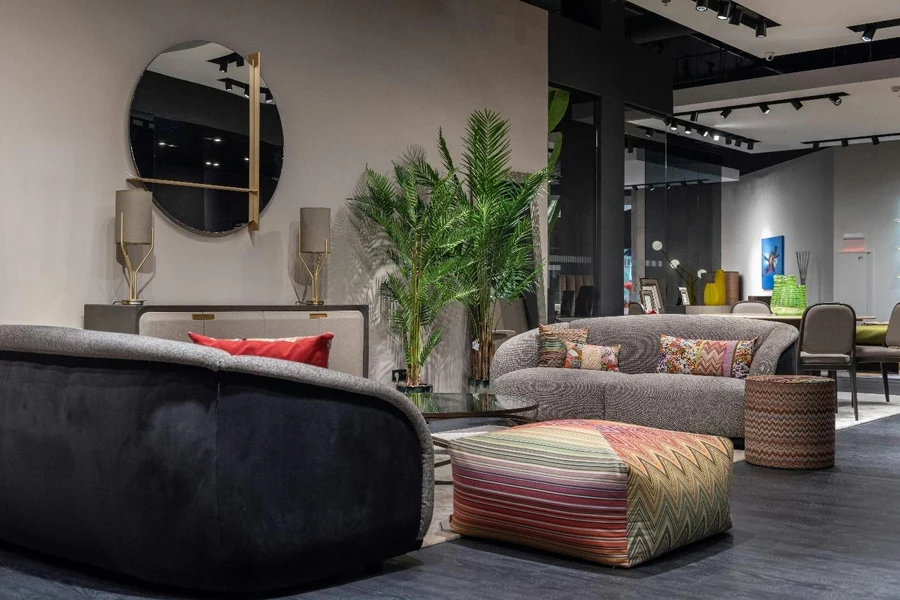
Material and durability
When you’re picking out a pouf for a room that gets a lot of action, the key factors to consider are what it’s made of and how long it will last. Leather poufs are popular for their durability and timeless look, with top-notch stitching and tough seams that hold up well over time. Velvet poufs are all about a luxury feel, usually crafted from a polyester mix that keeps its shape and color bright. Outdoor poufs typically use materials such as solution-dyed acrylic or marine-grade vinyl because they offer UV resistance and mildew resistance while also repelling water effectively to ensure durability in challenging weather conditions.
Size and shape
When choosing a pouf for a room’s design and purpose, considerations like size and shape are factors to think about carefully. The larger poufs, which typically have a diameter between 24 to 30 inches, can serve as coffee tables or extra seating in living areas where space is abundant. These poufs are often built with a robust structure to hold heavier weights, making them not only decorative but also useful. On the other hand, smaller poufs around 16 to 20 inches in diameter work in smaller spaces or as footrests. Different shapes also play a role in how they work; for example, round poufs help distribute weight and are good for sitting on like stools, whereas square poufs filled with dense foam or beads create firm surfaces for holding trays or books.
Color and texture
The color and texture options for a pouf can greatly influence how a room looks and feels overall. The natural toned poufs in hues or shades of gray or cream are popular for their flexibility. They often come with textures such as herringbone or basketweave patterns to add interest without being too overpowering. On the other side, poufs made from materials like velvet or chenille frequently feature lush textures like tufting or quilting. These not only boost their appeal but also offer a tactile sensation. Experiment with different colors and textures to create an ambiance that suits your personal style. Incorporating stitching or piping can draw attention to a pouf design element, establishing it as a standout piece within a room setting.
Functionality
The effectiveness of a pouf depends significantly on how it’s designed and built. For sitting purposes, poufs that have a core made of high-density foam or a combination of foam and fiber provide both comfort and support. Poufs meant for use as side tables or footrests may have a structure with metallic bases to ensure stability. Some poufs also come with storage options like tops or zippered compartments that make them useful additions to small living rooms or bedrooms where space is limited. When deciding on whether to go for a firm filling, your pouf cushioning choice should match how you plan to use it to make sure it’s comfy and serves its purpose well.
Placement
Positioning a pouf plays a role in enhancing its functionality and visual appeal in a room or outdoor setting. When placing poufs outdoors, it’s best to position them in covered areas to prolong their durability, especially when they are crafted from weather-resistant materials. It’s important to place poufs that complement your current furniture setup. For instance, putting a pouf near a sofa or an armchair allows it to function as a footrest or extra seating option. In smaller rooms, placing a pouf on corners or even tucked beneath a console table can come in handy to maximize space usage without compromising on style and usefulness. The clever positioning of a pouf can add charm and functionality to a room layout by improving its flow and serving as a visually appealing design feature.
Conclusion
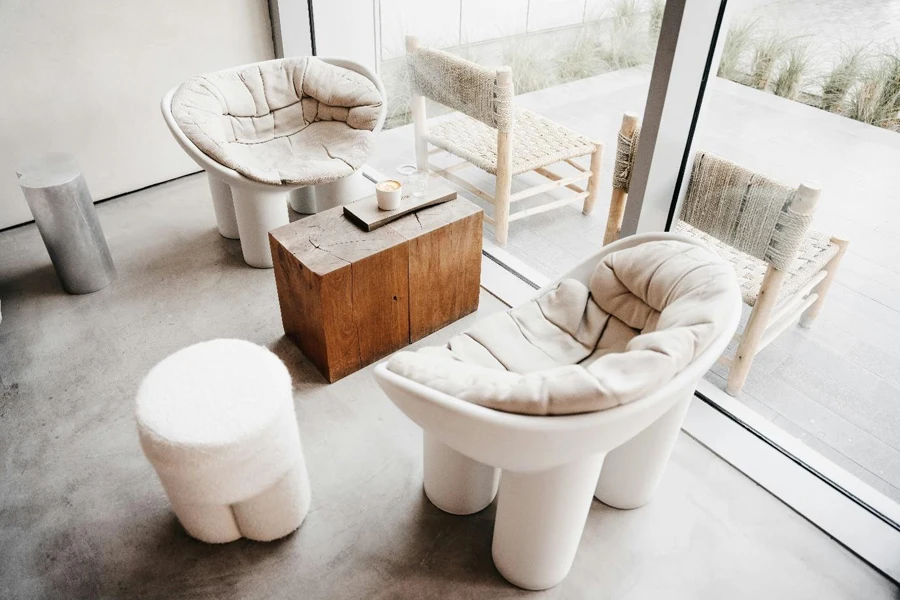
Over time, poufs have become important pieces in contemporary interior design that combine fashion and usefulness seamlessly. Staying updated on design trends and knowing about different types of poufs while taking into account aspects like material choice, size variations, and functionality all play a part in choosing just the right pouf, a decision that elevates both style and practicality in any room. Being adaptable to settings allows poufs to not just enhance existing decor but also aid in establishing lively indoor spaces.
